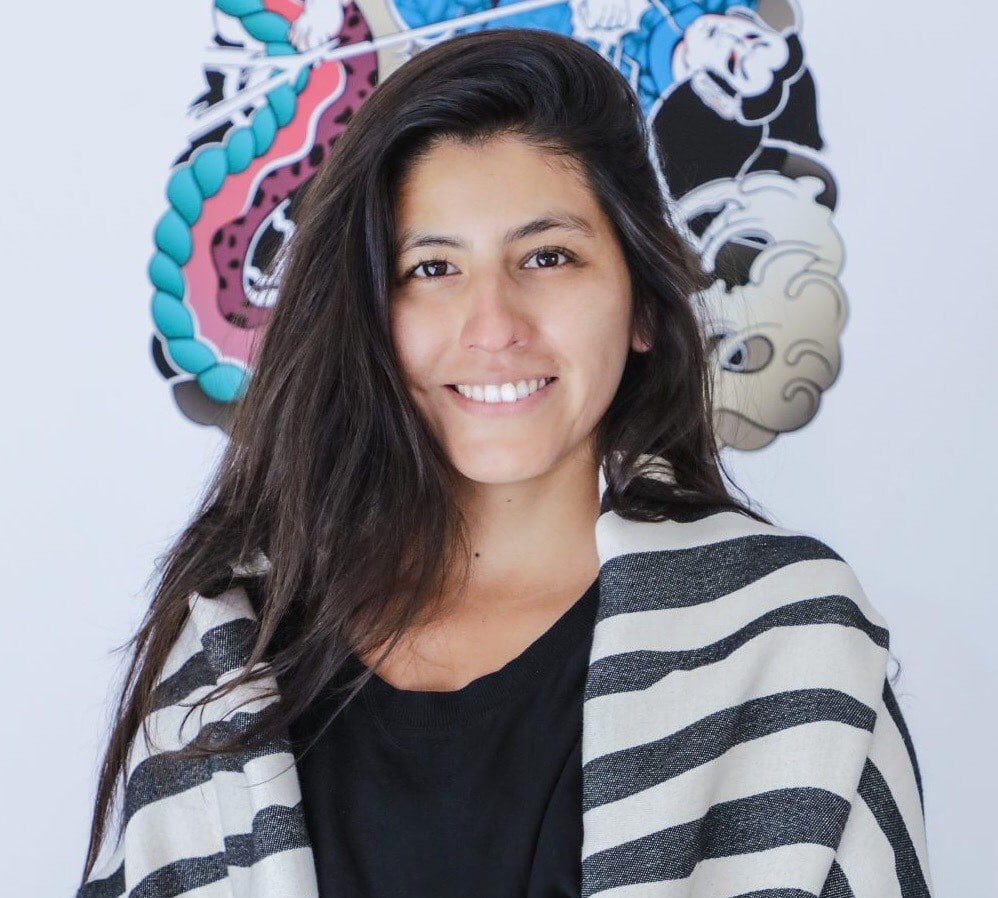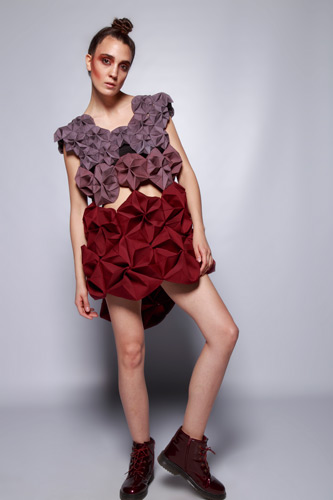
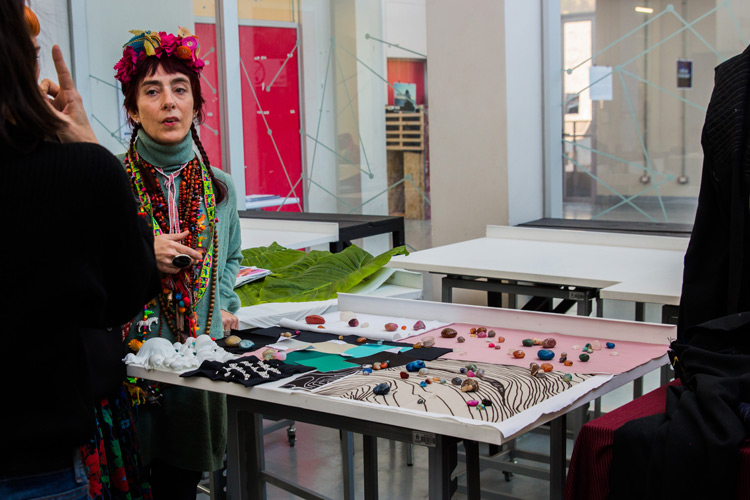
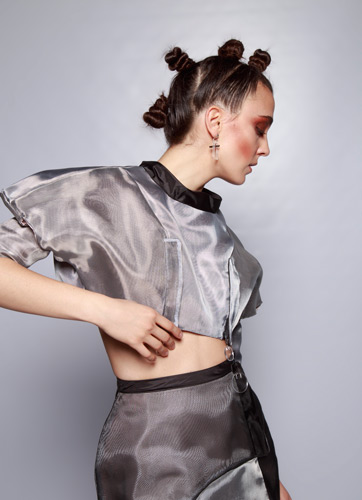
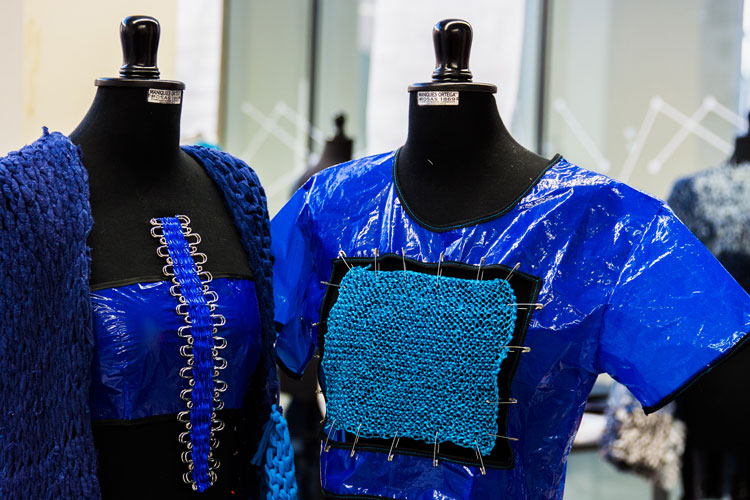


Clothing and Textile Design
Beyond clothing... new technologies, new trends, new solutions: Clothing and Textile Design at the Creative Campus
Degree
Bachelor's Degree in Design
(8 semesters)
Professional Degree
Clothing & Textile Designer
(8 semesters)
Duration
Four years
Campuses
Santiago
Clothing and Textile Design is based on the work of three action lines that students will be able to experience: design related to the creation of garments, research on new materials, and exploring new production systems for today’s world
- Program Description
- Why study this career at the Creative Campus
- Characteristics of the Creative Campus Clothing Designer
- Occupational Field
- Graduate Profile
- Plan carrera (Decreto)
Studying Clothing and Textile Design at the UNAB Creative Campus comprises four main disciplinary pillars:
- Design of clothing, textile, and product projects in the field of fashion from standard and experimental patterns, to manufacture, produce, and create designs with professional authorial results.
- Formulate analytical and critical points of view from the reflection of the clothing culture as the foundation of clothing and textile projects.
- Apply analog and digital techniques to produce processes and projects related to clothing, apparel, and textile.
- Use conceptual and technical resources with social and environmental responsibility in the field of clothing and textiles.
- The Clothing and Textile Design program at the UNAB Creative Campus trains professionals with skills and competencies for the development of clothing, textile, and product projects in the field of fashion, from standard and experimental patterns to manufacture, produce, and create designs with professional authorial results and social and environmental responsibility.
- It prepares professionals capable of adapting to the continuous changes in the professional environment and society.
- Our professionals are autonomous, analytical, flexible, and capable of integrating interdisciplinary work teams.
- The program stimulates and fosters the development of communication skills, critical thinking, information technologies, and social responsibility.
- Students are encouraged to learn English.
- Creative Campus graduates will be able to address societal challenges by understanding the creative disciplines.
- This will allow them to form interdisciplinary work teams and identify their potential to face society’s challenges, and perform professionally in these fields.
- To realize this potential, they will be equipped with management and entrepreneurial tools and an understanding of the national and international context.
Graduates of the Clothing and Textile Design program at Universidad Andrés Bello will be able to work in multiple fields, either independently or in teams, developing collections in different areas, trend forecasting, fashion editorials, fashion and textile content creation in different formats, retail offices, theatrical productions, audiovisual production, and events.
Graduates of the Clothing and Textile Design program are professionals capable of creating products and services in the fields of fashion, clothing, and textile in different formats, with social and environmental responsibility. They use creative disciplines as a tool to manage knowledge at a local and global level, developing proposals and projects from an interdisciplinary perspective.
Design graduates demonstrate the ability to integrate theoretical, methodological, and practical knowledge in the disciplines of their area of performance, utilizing analog and digital technologies and designing solutions according to the standards of the design culture.
The curriculum of the Costume and Textile Design program at Universidad Andrés Bello organizes its Learning Outcomes in the following Action Areas:
I. Field of Action: Interdisciplinary Culture Projects
- RdA 1.- Integrate and synthesize the main phenomena, discussions, conflicts, and changes that determine today’s contemporary cultural reflection in different fields of knowledge.
- RdA2.- Use management tools to evaluate the generation of sustainable, innovative proposals in developing projects and enterprises.
- RdA 3.- Create procedures and products through conceptual and technical resources to work in and integrate disciplinary and interdisciplinary contexts.
- RdA 4.- Design projects based on interdisciplinary issues that contribute to responding to complex phenomena in specific contexts.
II. Field of action: Systems, Processes, and Materials
- RdA1.- Formulate analytical and critical points of view from the reflection of the clothing culture as the foundation of clothing and textile projects.
- RdA2.- Design of clothing, textile, and product projects in the field of fashion, from standard and experimental patterns, for the manufacture, production, and creation of design with professional authorial results.
- RdA3.- Apply analog and digital techniques in the production of processes and projects of clothing, apparel, and textile.
- RdA4.- Use conceptual and technical resources with social and environmental responsibility in the field of clothing and textiles.
III. Scope of action: General Education and English
- RdA 1: Develop critical thinking through argumentation, using oral and written language appropriate to the academic and professional environment, and using a method based on criteria, facts, and evidence.
- RdA 2: Relate academic training to the local environment from the principle of social responsibility, considering the ethical dimension of daily practices and everyday speech in professional practice.
- RdA 3: Develop research projects with their respective ethical considerations, according to quantitative and qualitative methodological approaches recognized by their disciplinary area, effectively utilizing information technologies.
- RdA 4: Develop communication skills in English to function in daily, work, and academic contexts.
Learn about the Curriculum of the Clothing and Textile Design program of the School of Design of the School of Architecture, Arts, Design, and Communications.
Download the decree here






